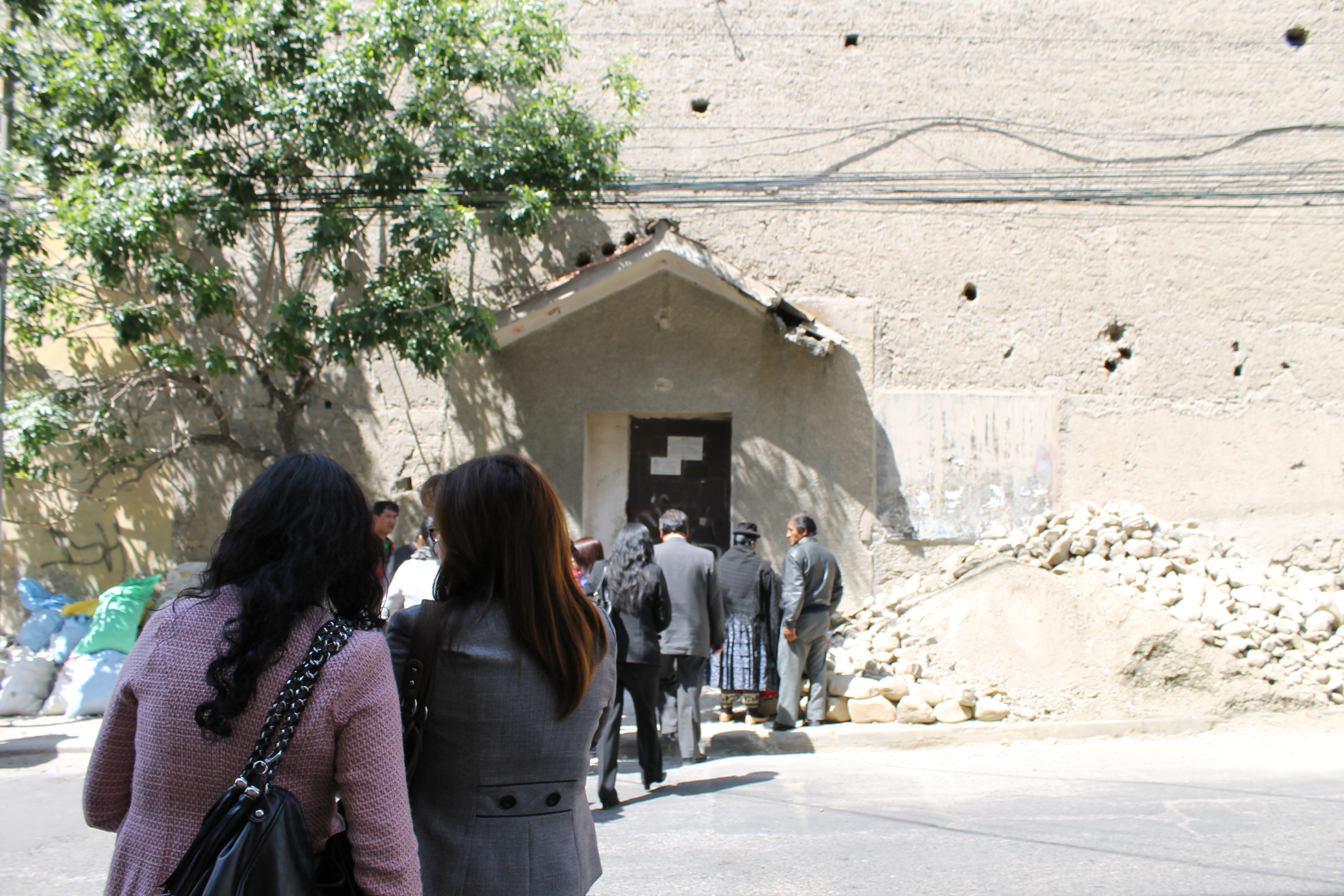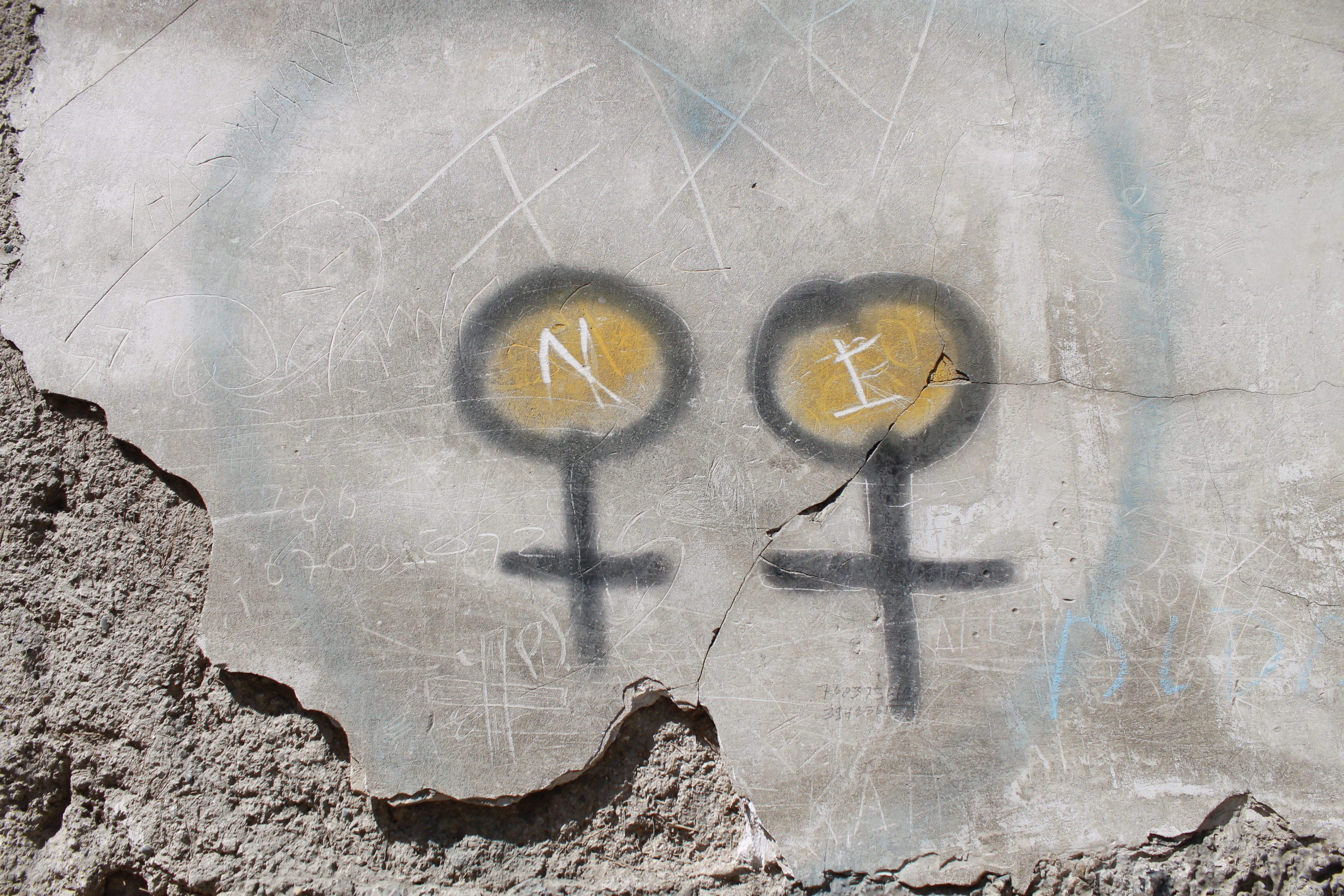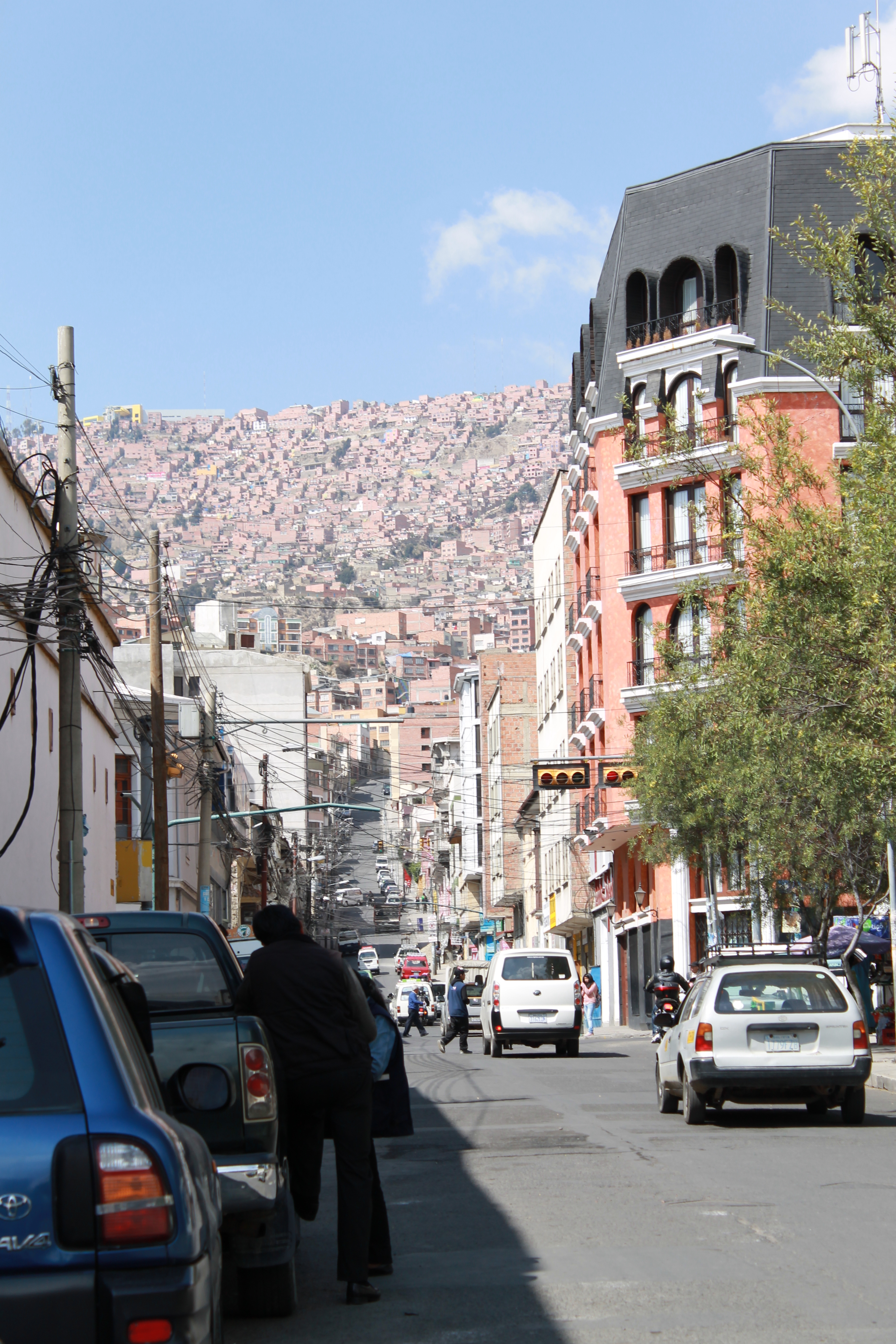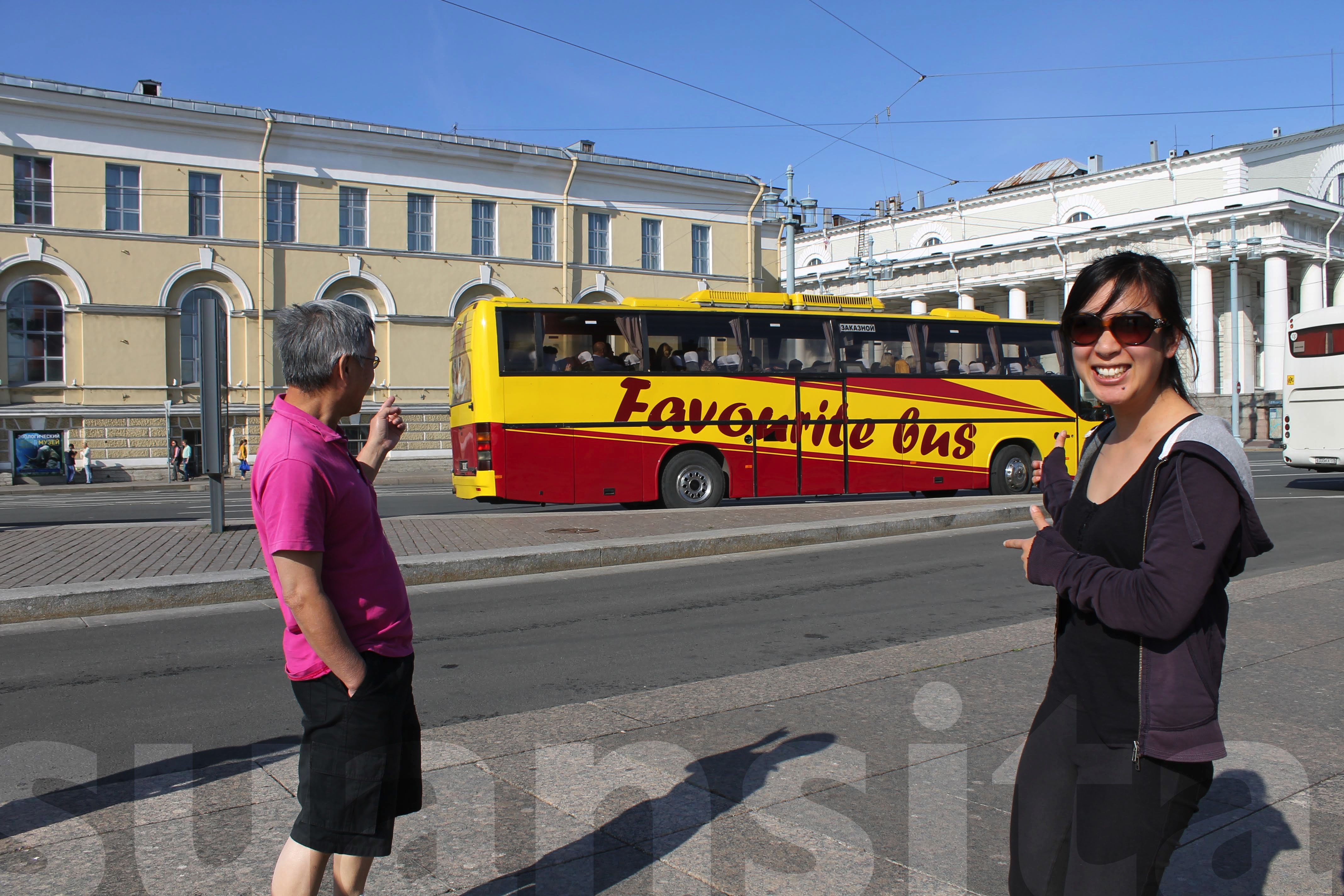The concrete walls soar straight up towards the sunny sky. It’s just like a fortress should be – a fortress founded smack bam in the middle of the city.
San Pedro Penitentiary.
IJM lawyer D says it’s a nasty place. “Horrible!” she affirms. Meanwhile, minibuses and motorbikes rumble past in the mid-morning traffic.
The small side entrance opens and the unlit room we find ourselves in seems to bear out her claim. I don’t have long to observe, as we’re led down a narrow passageway into another dark checkpoint where military men take our ID cards. They hold ajar an imposing wrought iron gate and usher us through, one by one.

The other side doesn’t look like jail at all. Salsa is blaring from the radio and refreshments are being sold from under rainbow beach umbrellas. Well-dressed men sit at tables – also under umbrellas – chatting, playing cards, drinking.
It’s like the courtyard of a bohemian hostel for backpackers. One wall is painted a bright shade of cyan. The adjoining wall is made of wooden panels, and there is a small row of potted plants growing outside the third storey. Through some of the open windows, guys can be seen watching TV or gazing out.
Further down the wall, a little above eye-level, is the following advertisement, typed on an A4 piece of paper:
FOR SALE
LARGE BEDROOM,
WITH ENSUITE
CONTACT: PATRICIO
“This is where the rich ones hang out,” D whispers. You can buy a comfortable jail “cell”, and obviously Patricio doesn’t need a last name (or any other contact details) because everyone knows who he is.
Off the courtyard, we shuffle into a small, dark room. The lawyers set about arranging metal tablet arm chairs reminiscent of the schoolrooms of yesteryear. The judge makes himself comfortable behind the one small table in the room and the two citizen judges squeeze in beside and a little behind him. Next to them, two female court staff settle into the corner. To the right of the judges, each of the defence lawyers take a seat and indicate for their clients to do the same. D finds a chair to the left of the judges, along with the public prosecutor and the lawyer for the Children’s Defender. I stand beside the door trying to be as inconspicuous as a foreigner can hope to be.
Outside, inmates mill about, peering in every now and then to see what’s happening. The radio is still pumping out beats. This doesn’t feel like a courtroom, any more than it feels like a prison.

The judge opens proceedings. He asks the first accused why he failed to turn up to last week’s hearing. A short, stocky man in his mid-30s stands. He has a boyish eyes and bowl cut to match, and I think to myself: This is the guy who raped his stepdaughter.
He mumbles something about having left his cell, ready to go to court – but no one came to take him there. Apparently there were no policemen available to escort him. This is so normal here in Bolivia it’s not funny.
There’s another issue: the third citizen judge hasn’t arrived. Also unsurprising here. Fortunately, with the professional judge and two citizen judges we have enough to make quorum and the court moves swiftly (yes, really!) to officially remove the third citizen judge from the process. It goes even further to order that the matter be referred to the Public Ministry for potential disciplinary action against the offending judge.
Now to business.
The public prosecutor, a slight man with salt and pepper hair and beard but a much younger face, proposes the use of “alternative resolutions” in “abbreviated proceedings” as requested by the second accused (the victim’s mother) and permitted under the new Law 586, passed just three weeks ago. He’s talking about a plea bargain agreed upon ten days ago with both defendants.
Everyone holds their breath.
The judge pauses before referring to directives from the Supreme Court of Bolivia, reasoning that the new provisions about plea bargaining are to be read alongside the new provisions eliminating the use of citizen judges. That is, the use of plea bargaining at any time before sentencing (previously only available before indictment) assumes a bench of three professional judges, not citizen judges, and this bench has already been constituted. Giving retrospective effect to this case will set a complicated precedent for other cases. This is his advice to the two citizen judges, and of course they meekly agree with his legal opinion – so the request is rejected.
The two defence lawyers immediately object.
They make some good arguments.
Citizen judges, although not legal professionals, are perfectly capable of understanding what a plea bargain involves and using their judgment to decide whether it’s valid in the case at hand.
The defence is requesting two convictions, not acquittals.
As a general rule, laws are not to be applied retrospectively, but the final provisions of Law 586 do specify restrictions on the applicability of certain articles to cases commenced before October 30 – and the article regarding abbreviated proceedings is not one of those mentioned. Given the key objective of the law is to speed up proceedings and free up the justice system, plea bargaining should be admitted even in pre-Law 586 cases.
This last argument is the clincher, and the court reconsiders and now accepts the request for abbreviated proceedings.
Following some formalities involving the listing of evidence to support the charges – during which the power fails, lights go off and the radio falls silent – the court calls for a recess to consider its verdict. Because there is no other room available where the judges can go to discuss their decision, they and the court staff stay inside the dark room and the rest of us (lawyers, defendants and all) shuffle out and wait on the other side of the door.

Fifteen minutes later, we turn our eyes away from the inmates relaxing in the sun and back to the “courtroom”, where power has been restored but everything is still dimly lit.
The court secretary reads the verdict and sentence: 19 years jail for the first accused, and half of that for the second accused. No less than what the parties had negotiated between themselves.
The short, stocky man with boyish eyes and a bowl cut will spend those 19 years right here in San Pedro. But not in the sunny patio. I’m not sure I want to see what his cell looks like.
*
I was later told San Pedro is to be the subject of a Brad Pitt movie. Who knew it was a tourist attraction!

